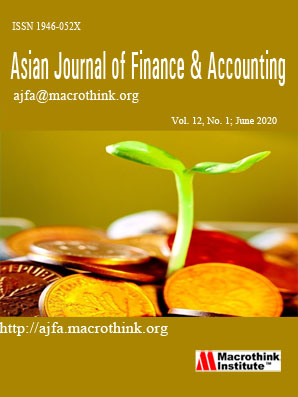Neoclassical Asset Pricing Tests in Sri Lanka: A Structural Empirical Review
Abstract
Neoclassical asset pricing models try to explain cross sectional variation in stock returns. This study critically reviews the findings of empirical investigations on neoclassical asset pricing models in the Colombo Stock Exchange (CSE), Sri Lanka. The study uses the structural empirical review (SER) methodology to capture a holistic view of empirical investigations carried out in the CSE from the year 1997 to 2017.
The pioneering Capital Asset Pricing Model (CAPM) (Sharpe, 1964; Lintner, 1965: Black, 1972) (SLB) states that market betas of stocks are sufficient to explain the cross sectional variation of stock returns. Alternatively there are multifactor models (Ross, 1976; Chen, 1986; Fama and French, 1993, 2015; Cahart, 1997) that state stock returns are driven by multiple risk factors. Similar to other markets the findings on the SLB model are not consistent in the CSE. The Fama and French (1993) and the Cahart (1997) models are supported in the CSE which is consistent with other markets, but the explanatory powers of them are substantially low in the Sri Lankan context. Contrasting the findings of a significant impact of macroeconomic factors on stock returns in developed markets, the impact of them in the CSE are temporary.
The overall findings of the applicability of neoclassical asset pricing models in the CSE are inconsistent and inconclusive and the study identifies two reasons that may have contributed to such results. Firstly, it recognises that the inherent limitations of neoclassical asset pricing models may have affected the findings in the CSE. Secondly, it supports the argument that neoclassical models, as they are may not be applicable in emerging or frontier markets, thus they may need to be augmented with characteristics of such markets to make them more applicable.
Submission of an article implies that the work described has not been published previously (except in the form of an abstract or as part of a published lecture or academic thesis), that it is not under consideration for publication elsewhere, that its publication is approved by all authors and tacitly or explicitly by the responsible authorities where the work was carried out, and that, if accepted, will not be published elsewhere in the same form, in English or in any other language, without the written consent of the Publisher. The Editors reserve the right to edit or otherwise alter all contributions, but authors will receive proofs for approval before publication.
Copyrights for articles published in MTI journals are retained by the authors, with first publication rights granted to the journal. The journal/publisher is not responsible for subsequent uses of the work. It is the author's responsibility to bring an infringement action if so desired by the author.








